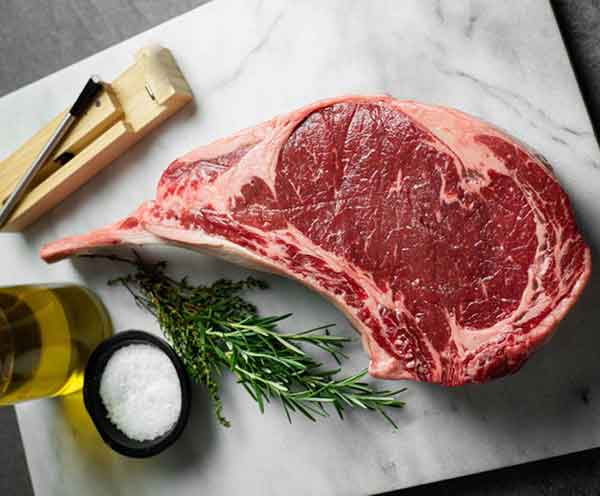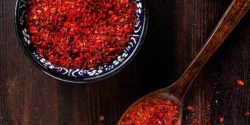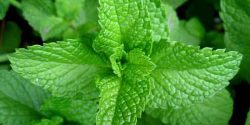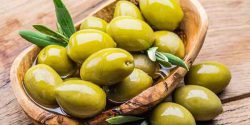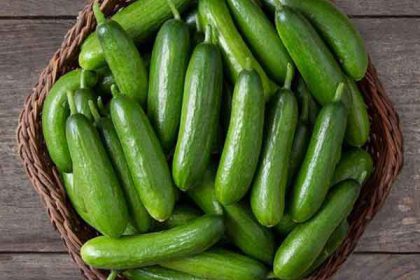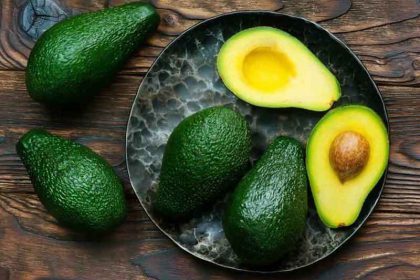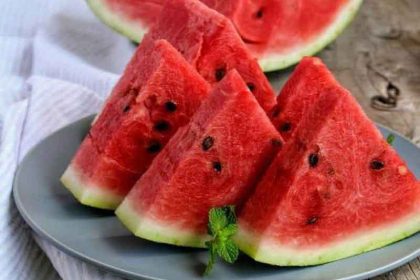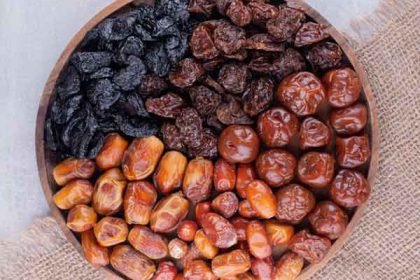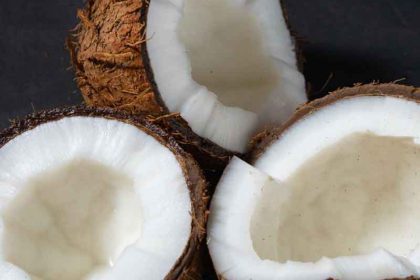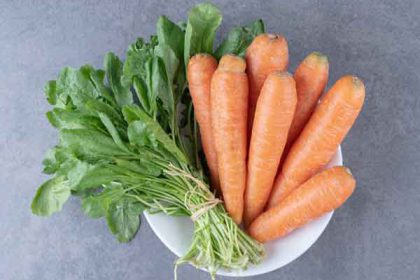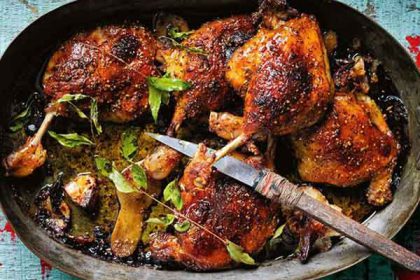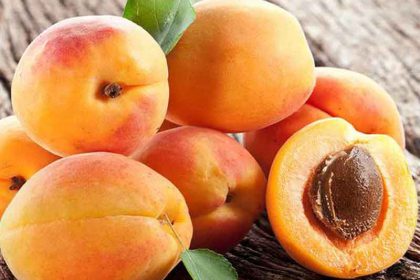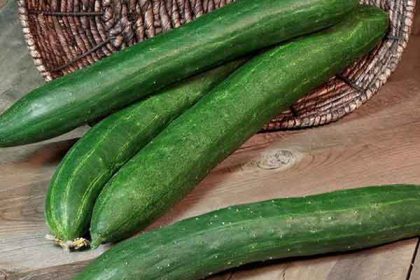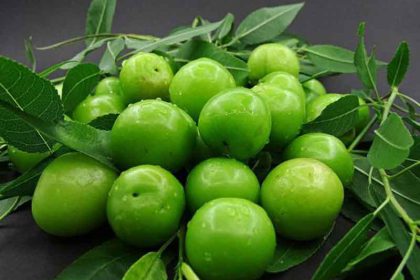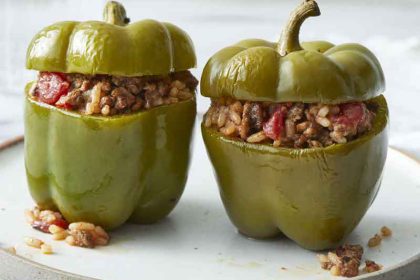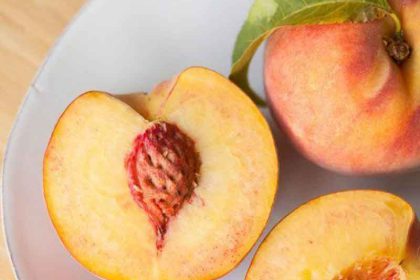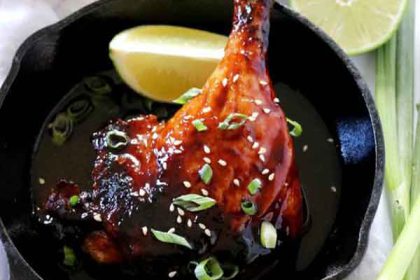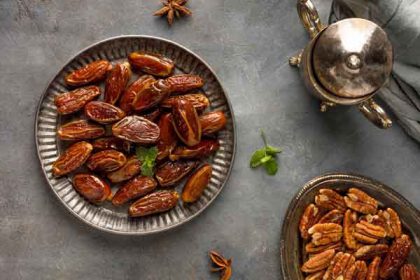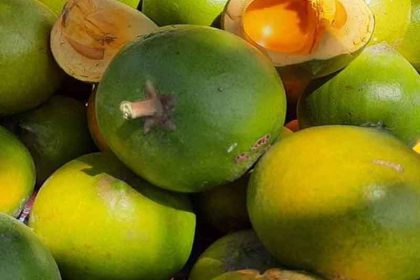Pork meat benefits for weight loss and skin and recipes
Pork meat
Pork meat benefits for weight loss and skin and recipes on Nicholi site. We hope this article will be of interest to you.
Eating pork in moderation can provide benefits such as being a good source of protein, essential vitamins, and minerals. It can also be versatile in cooking and enjoyed for its taste and texture. However, there are some disadvantages to consider, including the high saturated fat content in certain cuts, the potential for contamination and allergic reactions, environmental concerns, and religious or cultural restrictions. When it comes to weight loss, lean cuts of pork can be part of a healthy diet when consumed in moderation and prepared using healthier cooking methods. There is some evidence linking processed meats, including pork, to an increased risk of cancer, but the overall risk is relatively small. Pork fat, or lard, contains a mixture of saturated and unsaturated fats, and while moderation is important, some unsaturated fats can have positive effects on heart health. The protein content of pork can vary depending on the cut and preparation method. Scientific reasons against eating pork include health risks associated with processed meats and their high fat and cholesterol content.
Benefits of eating pork
Eating pork, when consumed in moderation and as part of a balanced diet, can provide several potential advantages. Here are some advantages of including pork in your diet:
Protein Source: Pork is a good source of high-quality protein, which is essential for various bodily functions, including muscle growth and repair, hormone production, and immune system function. Protein from pork contains all the essential amino acids needed by the body.
Nutrient Content: Pork is rich in essential vitamins and minerals. It is particularly high in B vitamins such as thiamine, niacin, vitamin B6, and vitamin B12, which play important roles in energy production, brain function, and the formation of red blood cells. Additionally, pork contains minerals like iron, zinc, selenium, and phosphorus, which are necessary for overall health.
Iron Absorption: Pork is a source of heme iron, which is highly bioavailable and easily absorbed by the body. Iron is crucial for the production of red blood cells and oxygen transport, and it helps prevent iron-deficiency anemia.
Culinary Versatility: Pork is used in a wide range of culinary traditions, offering versatility in cooking methods and flavor profiles. From roasts and chops to ribs and sausages, pork can be prepared in various ways to suit different tastes and preferences.
Taste and Texture: Many people enjoy the taste and texture of pork, making it a satisfying choice for meals. The natural fat marbling in certain cuts can contribute to a juicy and flavorful eating experience.
Cultural Significance: Pork holds cultural significance in many cuisines and is a staple in traditional dishes around the world. Including pork in your diet can allow you to explore and appreciate the culinary heritage of different cultures.
Disadvantages of eating pork
While pork can be a part of a balanced diet, there are a few potential disadvantages to consider:
High in Saturated Fat: Certain cuts of pork, especially those with visible fat or marbling, can be higher in saturated fat. Consuming excessive amounts of saturated fat has been linked to an increased risk of cardiovascular disease. It’s important to choose lean cuts of pork and trim visible fat to reduce saturated fat intake.
Potential for Contamination: Improper handling, storage, or cooking of pork can lead to foodborne illnesses. Pork can sometimes be a source of bacterial contamination, such as Salmonella or E. coli. It’s crucial to practice safe food handling, thoroughly cook pork, and follow recommended food safety guidelines to minimize the risk of foodborne illnesses.
Possible Allergic Reactions: Some individuals may have allergies or sensitivities to pork proteins. Allergic reactions to pork can range from mild symptoms like hives or digestive issues to more severe reactions. If you suspect an allergy or sensitivity, it’s important to consult with a healthcare professional for proper diagnosis and guidance.
Environmental Impact: Pork production, like other types of livestock farming, can have environmental implications. Issues such as greenhouse gas emissions, water usage, and land use can arise in intensive pig farming systems. Sustainable and responsible farming practices can help mitigate these concerns.
Religious or Cultural Considerations: Certain religious or cultural practices restrict or prohibit the consumption of pork. For individuals who follow these beliefs, the consumption of pork may not align with their dietary restrictions or cultural norms.
Is pork healthy for weight loss?
When it comes to weight loss, the healthiness of pork depends on the specific cut and how it’s prepared. Here are a few points to consider:
Lean Cuts: Some cuts of pork, such as tenderloin and loin chops, can be relatively lean and low in fat. These cuts can be a part of a healthy weight loss diet as they provide protein while being lower in calories and saturated fat compared to fattier cuts.
Moderation: As with any meat, portion control is important. While lean cuts of pork can be a good source of protein, they still contain calories. Pay attention to serving sizes and balance your overall calorie intake to create a calorie deficit for weight loss.
Cooking Methods: The way pork is prepared can significantly impact its health. Avoid deep-frying or cooking with excessive amounts of oil or unhealthy sauces, as these can add extra calories and unhealthy fats. Instead, opt for healthier cooking methods such as grilling, roasting, or baking without added fats.
Nutrient Profile: Pork contains various essential nutrients, including protein, vitamins (such as B vitamins), and minerals (such as iron and zinc). These nutrients are important for overall health and can support weight loss efforts by promoting satiety and muscle maintenance.
Balance and Variety: While pork can be part of a weight loss diet, it’s important to maintain a balanced and varied eating plan. Include a variety of lean proteins, fruits, vegetables, whole grains, and healthy fats to ensure you’re getting a wide range of nutrients.
Does pork cause cancer?
There is some evidence suggesting a potential link between the consumption of processed meats, including pork, and an increased risk of certain types of cancer. The International Agency for Research on Cancer (IARC), which is part of the World Health Organization (WHO), has classified processed meats as Group 1 carcinogens, meaning they are classified as substances that are carcinogenic to humans.
The link between processed meats and cancer risk is primarily attributed to the presence of certain chemicals, such as nitrites and nitrates, as well as the formation of potentially carcinogenic compounds during the processing and cooking of meats.
However, it’s important to note that the overall risk associated with consuming processed meats is relatively small, and individual risk factors and lifestyle choices also play significant roles in the development of cancer. Other factors such as smoking, alcohol consumption, obesity, lack of physical activity, and a diet low in fruits and vegetables have also been linked to an increased risk of cancer.
When it comes to pork and cancer risk, the evidence is less clear compared to processed meats. Fresh, unprocessed pork is not classified as a Group 1 carcinogen. It is worth noting that lean cuts of pork can be part of a healthy diet when consumed in moderation and prepared using healthier cooking methods.
To reduce the potential cancer risk associated with processed meats, it’s generally recommended to limit consumption and choose healthier protein sources, such as lean poultry, fish, legumes, and plant-based proteins. It’s also important to focus on an overall balanced and varied diet, rich in fruits, vegetables, whole grains, and other nutrient-dense foods.
Is pork fat healthy?
Pork fat, also known as lard, contains a mixture of saturated and unsaturated fats. While it is true that pork fat is high in saturated fat, which has been associated with an increased risk of cardiovascular disease, recent research has shown that the health effects of dietary fat are more nuanced than previously believed. Some points to consider:
Saturated Fat: Pork fat is relatively high in saturated fat, which, when consumed in excess, can raise levels of LDL (low-density lipoprotein) cholesterol, often referred to as “bad” cholesterol. High levels of LDL cholesterol are associated with an increased risk of heart disease. Therefore, it is generally recommended to consume saturated fats in moderation and choose leaner cuts of meat when possible.
Monounsaturated and Polyunsaturated Fats: Pork fat also contains monounsaturated and polyunsaturated fats, which are considered healthier fats. These fats, particularly monounsaturated fats, can have positive effects on heart health when consumed in moderation. They can help improve cholesterol levels by increasing HDL (high-density lipoprotein) cholesterol, often referred to as “good” cholesterol, and reducing LDL cholesterol levels.
Moderation and Balance: While small amounts of pork fat can be a part of a balanced diet, it’s important to consume it in moderation and as part of an overall healthy eating plan. The key is to balance your fat intake by incorporating a variety of healthy fats from sources such as nuts, seeds, avocados, and vegetable oils. It’s also essential to focus on consuming a range of nutrient-dense foods, including fruits, vegetables, whole grains, and lean sources of protein.
Individual Considerations: It’s important to consider individual dietary needs and health conditions. For individuals with specific health concerns, such as cardiovascular disease, obesity, or high cholesterol, it may be advisable to limit or avoid foods high in saturated fat, including pork fat. It’s always a good idea to consult with a healthcare professional or registered dietitian for personalized advice based on your individual circumstances.
Pork protein
Pork is a good source of protein, providing a complete amino acid profile necessary for various bodily functions. The protein content of pork can vary slightly depending on the specific cut and preparation method. Here are approximate protein values for some common cuts of pork:
Pork Loin (Roasted): Approximately 25 grams of protein per 100 grams (3.5 ounces).
Pork Tenderloin (Roasted): Approximately 22 grams of protein per 100 grams (3.5 ounces).
Pork Chop (Broiled or Grilled): Approximately 25 grams of protein per 100 grams (3.5 ounces).
Ground Pork (Cooked): Approximately 26 grams of protein per 100 grams (3.5 ounces).
Pork Shoulder (Roasted): Approximately 20 grams of protein per 100 grams (3.5 ounces).
Scientific reasons not to eat pork
As an AI language model, I can provide information on various perspectives regarding the consumption of pork, but it’s important to note that dietary choices are highly individual and can be influenced by cultural, religious, ethical, and personal beliefs. Here are some scientific points that are often discussed in relation to the consumption of pork:
Health Risks: There are concerns about certain health risks associated with pork consumption, particularly when it comes to processed pork products. Processed meats, including certain pork products like bacon, sausages, and deli meats, have been classified as Group 1 carcinogens by the International Agency for Research on Cancer (IARC), meaning they are considered to have strong evidence of a link to cancer, specifically colorectal cancer.
High Fat and Cholesterol Content: Pork can be higher in fat and cholesterol compared to other leaner meats such as poultry or fish. Consuming excessive amounts of saturated fat and cholesterol has been associated with an increased risk of cardiovascular disease and high blood cholesterol levels.
Zoonotic Diseases: Pork has been associated with some zoonotic diseases, which are infections that can be transmitted from animals to humans. For example, undercooked or improperly handled pork can potentially carry parasites such as Trichinella spiralis, which can cause trichinellosis.
Religious or Cultural Beliefs: In certain religious or cultural traditions, the consumption of pork is prohibited or discouraged. This may be based on religious texts, cultural practices, or historical reasons.
Is eating pork every day bad for you?
Eating pork every day can potentially have health implications, particularly if it is consumed in excessive amounts or prepared in unhealthy ways. Here are some considerations:
High Saturated Fat and Cholesterol: Pork, especially fatty cuts and processed pork products, can be high in saturated fat and cholesterol. Consuming excessive amounts of saturated fat and cholesterol has been associated with an increased risk of cardiovascular disease, high blood cholesterol levels, and other health conditions. It’s recommended to choose leaner cuts of pork and moderate your overall intake of saturated fat and cholesterol from all sources.
Processing and Additives: Processed pork products like sausages, bacon, and deli meats often contain additives, preservatives, and high levels of sodium. Regular consumption of processed meats has been associated with an increased risk of certain cancers and other health issues. It’s advisable to limit the intake of processed pork products and choose fresh, unprocessed cuts of pork whenever possible.
Varied Nutrient Intake: Consuming the same food every day can lead to a lack of dietary variety and potentially inadequate intake of other essential nutrients. It’s important to have a balanced diet that includes a variety of protein sources, fruits, vegetables, whole grains, and healthy fats to ensure you are getting a wide range of nutrients.
Potential Foodborne Illness: Pork, like any other meat, can carry bacteria that can cause foodborne illnesses if not cooked and handled properly. It’s essential to practice good food safety measures, such as proper cooking temperatures, safe storage, and avoiding cross-contamination, to reduce the risk of foodborne illnesses.
Is pork red meat?
Yes, pork is classified as red meat. Red meat generally refers to meat that is darker in color when raw, such as beef, lamb, and pork. The classification is based on the myoglobin content in the muscle fibers, which gives red meat its characteristic color. Pork typically has a reddish hue, although the exact color can vary depending on factors such as the specific cut and the age of the animal.
It’s worth noting that some cuts of pork, such as pork tenderloin, can be leaner and have a lighter color compared to fattier cuts like pork belly. The classification of pork as red meat is primarily based on its myoglobin content rather than its fat content.
The consumption of red meat, including pork, has been associated with certain health considerations. High consumption of red meat, particularly processed red meats, has been linked to an increased risk of cardiovascular disease, certain types of cancer, and other health conditions. It’s recommended to consume red meat in moderation and choose leaner cuts, while also incorporating a variety of other protein sources and nutrient-dense foods into your diet. As with any dietary choices, individual factors and overall dietary patterns should be taken into account. Consulting with a healthcare professional or registered dietitian can provide personalized guidance based on your specific needs and goals.
How does eating meat affect the brain?
Eating meat can have various effects on the brain, primarily due to the nutrients and compounds present in meat that can impact brain function. Here are a few ways in which eating meat can affect the brain:
Protein: Meat is a rich source of protein, which is crucial for the structure and function of the brain. Proteins are composed of amino acids, which are essential for the synthesis of neurotransmitters, the chemical messengers in the brain that regulate mood, cognition, and behavior.
Vitamins and Minerals: Meat, particularly organ meats, can be rich in essential vitamins and minerals that support brain health. For example, vitamin B12 found in meat is important for maintaining the health of nerve cells and promoting proper brain function. Iron and zinc, also present in meat, play roles in cognitive development and function.
Omega-3 Fatty Acids: Some types of meat, such as fatty fish like salmon, contain omega-3 fatty acids, including docosahexaenoic acid (DHA). Omega-3 fatty acids are essential for brain health and are involved in various brain functions, including neurodevelopment, cognition, and mood regulation.
Neurotransmitter Precursors: Meat contains amino acids that serve as precursors for neurotransmitter synthesis. For example, the amino acid tryptophan found in meat is a precursor for serotonin, a neurotransmitter involved in mood regulation and sleep.
Dietary Factors: The overall composition of a person’s diet, including the presence or absence of meat, can have a broader impact on brain health. A well-balanced diet that includes a variety of nutrient-dense foods, including lean meats, fruits, vegetables, whole grains, and healthy fats, supports overall brain function and cognitive health.
Does cook pork have worms?
Undercooked or raw pork can potentially contain parasites, including Trichinella spiralis, which causes a parasitic infection known as trichinellosis. Trichinella larvae can be present in the muscle tissue of infected pigs. However, thorough cooking kills these parasites, making the meat safe to consume.
When pork is cooked to an internal temperature of 145°F (63°C) with a three-minute rest time, or until the juices run clear and there is no pink color inside, any potential parasites, including Trichinella, are destroyed. It’s important to ensure proper cooking of pork to minimize the risk of foodborne illnesses. To ensure the safety of pork, it’s advisable to follow proper food handling and cooking practices, such as:
Cook pork thoroughly: Make sure pork is cooked to the appropriate internal temperature as recommended by food safety guidelines.
Avoid cross-contamination: Prevent raw pork from coming into contact with other foods, utensils, or surfaces that will come into contact with cooked food.
Practice good hygiene: Wash hands thoroughly before and after handling raw pork, and clean all utensils and surfaces that come into contact with raw meat.
By following these guidelines, the risk of consuming undercooked pork containing parasites can be minimized.
Does all pork have worms?
No, not all pork contains worms. The presence of worms, specifically the parasite Trichinella spiralis, is relatively rare in modern pork production due to improved hygiene and strict regulations. Commercially raised pigs are routinely inspected and tested for parasites to ensure their safety for consumption.
However, it’s important to note that there have been cases of Trichinella infection in pigs, especially in certain regions or in pigs that have been exposed to contaminated environments or fed uncooked or improperly treated feed. Trichinella infection can occur if pork is consumed raw or undercooked, allowing the parasite to survive.
To prevent the risk of contracting Trichinella or other foodborne illnesses, it is essential to cook pork thoroughly to a safe internal temperature of 145°F (63°C) with a three-minute rest time. This temperature is sufficient to kill any potential parasites or harmful bacteria present in the meat.
Can you eat a pig that has worms?
It is not recommended to eat pork from a pig that is known to have worms or is suspected of having a parasitic infection. Consumption of undercooked or raw pork that contains parasites can lead to health issues. One of the parasites commonly associated with pigs is Trichinella spiralis, which causes trichinellosis in humans.
Trichinellosis can cause symptoms such as abdominal pain, diarrhea, vomiting, muscle pain, fever, and swelling around the eyes. In severe cases, it can lead to more serious complications.
To ensure food safety, it is important to cook pork to a safe internal temperature of 145°F (63°C) with a three-minute rest time. This temperature is
Does all meat have parasites?
Not all meat contains parasites, but it is possible for meat to harbor parasites depending on various factors, including the animal species, its living conditions, and the meat handling and processing practices. Some meats, such as pork and fish, have a higher likelihood of containing parasites compared to others. Common parasites associated with meats include:
Trichinella spiralis: This parasite can be found in pork and can cause trichinellosis if the meat is consumed raw or undercooked.
Anisakis: Anisakis is a parasitic worm that can be found in fish, particularly in certain species like cod, herring, and mackerel. Consuming raw or undercooked infected fish can lead to anisakiasis.
Tapeworms: Various types of tapeworms can infect animals and occasionally be found in meat, especially in poorly inspected or improperly prepared meats.
It’s important to note that proper handling, processing, and cooking of meat significantly reduce the risk of parasitic infections. Cooking meat to the appropriate temperature kills most parasites, making the meat safe for consumption. Freezing meat at sub-zero temperatures for a certain duration can also help in killing parasites, depending on the specific type.
Is pork white meat?
The classification of pork as either white meat or red meat is a subject of debate and can vary depending on different contexts and cultural interpretations. Traditionally, pork has been categorized as red meat alongside beef and lamb due to its higher myoglobin content, which gives it a reddish color.
However, in the culinary and nutritional context, pork is often referred to as “the other white meat” to differentiate it from darker red meats like beef. This designation is primarily based on the meat’s appearance, texture, and cooking characteristics rather than its myoglobin content.
Compared to red meats, pork generally has a lighter color when cooked and tends to be leaner, particularly cuts such as pork tenderloin and loin. It is often used in dishes and recipes that are typically associated with white meats like chicken and turkey.
It’s important to note that the classification of pork as white meat is not universally agreed upon, and it can vary depending on cultural, culinary, and personal perspectives. From a nutritional standpoint, the specific cut of pork and its fat content can also influence its classification as lean or fatty.
Is pork healthier than beef?
The healthiness of pork versus beef depends on various factors, including the specific cuts of meat, cooking methods, and individual dietary needs. Here are some key considerations:
Fat Content: Pork and beef can have varying fat contents depending on the cuts. Lean cuts of pork, such as pork tenderloin or loin, can be relatively low in fat and comparable to lean cuts of beef. However, fattier cuts of pork, such as pork belly or ribs, can have higher fat content. Similarly, the fat content of beef can vary depending on the cut.
Saturated Fat and Cholesterol: Both pork and beef can contain saturated fat and cholesterol. Consuming excessive amounts of saturated fat and cholesterol has been associated with an increased risk of cardiovascular disease. Choosing lean cuts and trimming visible fat can help reduce the saturated fat content. It’s recommended to moderate your intake of saturated fat and cholesterol from all sources, including pork and beef.
Nutritional Profile: Pork and beef offer different nutritional profiles. They are both good sources of protein, vitamins (such as B vitamins), and minerals (like iron and zinc). The specific nutrient content can vary depending on the cuts and preparation methods. Including a variety of protein sources in your diet, including lean cuts of pork and beef, can help you obtain a range of essential nutrients.
Environmental Considerations: From an environmental standpoint, there is an ongoing debate about the sustainability and environmental impact of pork and beef production. Factors such as land use, water usage, greenhouse gas emissions, and feed requirements can differ between the two.
Ultimately, the healthiness of pork versus beef depends on factors such as the specific cuts chosen, portion sizes, cooking methods, and overall dietary patterns. It’s advisable to incorporate a variety of protein sources into your diet, including lean cuts of pork and beef, while also considering other sources such as poultry, fish, legumes, and plant-based proteins.
Is pork healthy or unhealthy?
The healthiness of pork can depend on several factors, including the specific cuts of pork, preparation methods, and overall dietary patterns. Here are some key considerations:
Nutrient Content: Pork can provide various essential nutrients, including high-quality protein, vitamins (such as B vitamins), and minerals (like iron, zinc, and selenium). However, the specific nutrient content can vary depending on the cut of pork. Lean cuts, such as pork tenderloin or loin, tend to be lower in fat and can be a good source of lean protein.
Fat Content: Pork can contain both saturated and unsaturated fats. Choosing lean cuts of pork and trimming visible fat can help reduce saturated fat intake. The fat content can vary depending on the specific cut and cooking method. Moderation and balance are key when considering the fat content in pork as part of a healthy diet.
Cooking Methods: The way pork is prepared and cooked can impact its health. Healthier cooking methods, such as grilling, baking, or roasting, can help minimize the addition of excessive fats and promote a healthier overall dish. Avoiding deep frying or using excessive amounts of added fats can help maintain the healthiness of pork-based meals.
Moderation and Portion Control: As with any food, moderation, and portion control are essential. Consuming large amounts of pork or any meat can contribute to an imbalanced diet. It’s recommended to incorporate a variety of protein sources, including lean cuts of pork, into a balanced meal plan.
Individual Health Factors: The healthiness of pork can also vary depending on individual health factors, dietary needs, and preferences. For individuals with specific health conditions or dietary restrictions, such as those related to sodium, cholesterol, or fat intake, it may be necessary to tailor the consumption of pork accordingly.
What happens to your body when you stop eating pork?
When you stop eating pork, your body undergoes various changes and potential benefits can arise. Here are some potential effects of eliminating pork from your diet:
Reduced Saturated Fat Intake: Pork can be higher in saturated fat compared to some other protein sources. By cutting out pork, you may reduce your saturated fat intake, which can have positive effects on heart health and cholesterol levels.
Lower Caloric Intake: Depending on your previous consumption patterns, eliminating pork from your diet may lead to a decrease in overall caloric intake. This can be beneficial for weight management if it helps create a calorie deficit.
Increased Plant-Based Options: By removing pork from your diet, you may be encouraged to explore more plant-based protein sources. This can lead to an increased intake of legumes, beans, tofu, tempeh, and other vegetarian or vegan protein options that can offer additional health benefits.
Potential Nutritional Changes: Pork can be a source of various nutrients, such as protein, B vitamins, and minerals like iron and zinc. When eliminating pork, it’s important to ensure you’re obtaining these nutrients from other dietary sources. Incorporating a balanced variety of protein-rich foods, whole grains, fruits, vegetables, and other animal or plant-based protein sources can help maintain overall nutritional balance.
Personal Factors: The impact of stopping pork consumption can vary depending on your individual health status, dietary patterns, and preferences. Some individuals may experience improved digestion, reduced inflammation, or positive changes in their cholesterol levels. Others may not notice significant differences. It’s important to listen to your body and make dietary choices that align with your specific needs and goals.
Is pork fat good for weight loss?
Pork fat, like any other type of fat, is calorie-dense and can contribute to weight gain if consumed in excess. While fat is an essential macronutrient that provides energy and aids in the absorption of certain vitamins, it’s important to consume it in moderation as part of a balanced diet.
When it comes to weight loss, reducing overall calorie intake and maintaining a calorie deficit is typically the key factor. Consuming excessive amounts of dietary fat, regardless of the source, can contribute to consuming more calories than needed and hinder weight loss efforts.
However, it’s worth noting that not all fats are created equal. Pork fat, particularly the fat found in cuts like bacon or fatty pork products, tends to be higher in saturated fat, which is associated with an increased risk of cardiovascular disease when consumed in excess. A high intake of saturated fat is generally not recommended for a healthy diet.
If you’re looking to lose weight, it’s advisable to choose leaner cuts of pork and trim visible fat to reduce overall fat intake. Incorporating a variety of lean protein sources, whole grains, fruits, vegetables, and healthy fats from sources like nuts, seeds, and plant oils can help create a balanced and calorie-controlled eating plan supportive of weight loss.
Is pork good for dogs?
Pork can be included in a dog’s diet in moderation, but there are a few important considerations to keep in mind:
Cooked and Unseasoned: Pork should always be cooked thoroughly to eliminate the risk of bacterial contamination. It’s also essential to avoid seasoning the pork with spices, sauces, or seasonings that may be harmful to dogs, such as garlic, onion, or excessive salt.
Lean Cuts: Opt for lean cuts of pork and remove any visible fat or skin before feeding it to your dog. Fatty cuts of pork can be difficult for dogs to digest and may lead to gastrointestinal upset or pancreatitis.
Portion Control: Pork should be fed to dogs in moderation and as part of a balanced diet. It shouldn’t constitute the majority of their food intake. A balanced diet for dogs includes a mix of protein sources, vegetables, fruits, and carbohydrates.
Allergies and Sensitivities: Some dogs may have allergies or sensitivities to pork or certain proteins in pork. If you notice any adverse reactions, such as digestive issues, skin problems, or allergies, it’s best to consult with a veterinarian for guidance.
Bones and Cooked Pork: Never feed cooked bones, including pork bones, to dogs. Cooked bones can splinter and cause serious injuries to a dog’s digestive system. Additionally, avoid feeding your dog fatty scraps, such as cooked pork fat, as it can lead to gastrointestinal issues.
Protein in pork tenderloin
Pork tenderloin is a lean cut of pork known for its tenderness and relatively low-fat content. The protein content in pork tenderloin can vary depending on the specific cut and size, but generally, it provides a good amount of protein per serving.
On average, a 3-ounce (85 grams) serving of cooked pork tenderloin provides approximately 22 grams of protein. This makes it a good source of high-quality protein, which is essential for building and repairing tissues, supporting muscle growth, and maintaining overall health.
It’s worth noting that the nutritional composition can slightly vary depending on the cooking method, seasonings, or added ingredients. Additionally, different cuts of pork may have slightly different protein content. Therefore, the specific protein content may vary slightly based on these factors.
When including pork tenderloin in your diet, it’s important to consider the overall balance of nutrients, including carbohydrates, fats, vitamins, and minerals, to ensure a well-rounded and nutritious meal.
Pork meat calories per 100g
The calorie content of pork meat can vary depending on the specific cut and cooking method. Here are approximate calorie values for different types of pork meat per 100 grams (3.5 ounces):
Pork Loin (Roasted): Approximately 143 calories
Pork Tenderloin (Roasted): Approximately 143 calories
Pork Chops (Boneless, Roasted): Approximately 172 calories
Ground Pork (Cooked): Approximately 297 calories
Pork Sausage (Cooked): Approximately 301 calories
Bacon (Fried): Approximately 42 calories (Note: Bacon is often consumed in smaller quantities than other pork cuts due to its higher fat content)
These calorie values are estimates and may vary depending on factors such as fat content, cooking method, and portion size. It’s important to note that the nutritional composition of pork can differ between cuts and preparation methods, so it’s advisable to check specific labels or use a reliable nutritional database for precise information on the type of pork meat you are consuming.
Lean pork nutrition facts 100g
Here are the approximate nutrition facts for lean pork per 100 grams (3.5 ounces):
Calories: 143
Protein: 25.7 grams
Fat: 3.5 grams
Saturated fat: 1.2 grams
Monounsaturated fat: 1.5 grams
Polyunsaturated fat: 0.5 grams
Cholesterol: 62 milligrams
Sodium: 53 milligrams
Please note that these values are approximate and can vary slightly depending on the specific cut of lean pork and the cooking method. It’s also important to consider that the nutritional composition of pork can vary between cuts, so it’s advisable to check specific labels or use a reliable nutritional database for precise information on the type of lean pork you are consuming.
What happens to your body when you stop eating pork?
When you stop eating pork, your body may experience several changes, but these effects can vary from person to person. Here are some potential changes that may occur:
Nutrient Intake: Pork is a source of various nutrients, including protein, vitamins (such as B vitamins), minerals (such as iron and zinc), and healthy fats. When you eliminate pork from your diet, it’s important to ensure that you’re obtaining these nutrients from other sources. A well-balanced diet that includes a variety of protein-rich foods, such as poultry, fish, legumes, nuts, and seeds, can help meet your nutrient needs.
Digestive Changes: Pork is a source of dietary fiber, and if you previously consumed high-fiber pork products (such as certain sausages or cured meats), you may experience changes in your bowel movements or digestion patterns when you stop eating them. However, if your pork intake primarily consisted of lean cuts, the impact on your digestion may be minimal.
Taste Preferences: If pork was a significant part of your regular diet, eliminating it may lead to changes in your taste preferences. Your palate may adapt over time, and you may find new foods and flavors that you enjoy as you explore alternative protein sources.
Cultural and Social Factors: Depending on your cultural background or social environment, stopping the consumption of pork may have implications in certain contexts, such as religious or cultural practices or social gatherings where pork is commonly served. Adjusting to these changes can be a personal and social adjustment.
Health Considerations: The impact of stopping pork consumption on your health will depend on various factors, including your overall diet, lifestyle, and individual health needs. If you eliminate pork as part of a well-balanced and nutritious diet that includes other protein sources, fruits, vegetables, whole grains, and healthy fats, it is possible to maintain a healthy lifestyle without adverse effects.
Bacteria in pork cannot be killed
It is not accurate to claim that bacteria in pork cannot be killed. Proper cooking methods and food safety practices can effectively kill bacteria and reduce the risk of foodborne illnesses associated with pork consumption. Cooking pork to the appropriate internal temperature is crucial for food safety.
Cooking pork to an internal temperature of at least 145°F (63°C) with a three-minute rest time is recommended by the United States Department of Agriculture (USDA) for safety and quality. This temperature is sufficient to kill harmful bacteria, such as Salmonella and E. coli, that may be present in pork.
Additionally, practicing good food handling and hygiene practices can help minimize the risk of bacterial contamination. This includes proper storage, separating raw and cooked foods, washing hands and utensils thoroughly, and avoiding cross-contamination. It’s important to handle and cook all types of meat, including pork, safely to ensure that harmful bacteria are eliminated and the risk of foodborne illnesses is minimized.
Eating pork in the bible
In religious texts such as the Bible, the consumption of pork is addressed as a dietary restriction in the Jewish faith and certain interpretations of Christianity. In the Old Testament of the Bible, specifically in the book of Leviticus (Leviticus 11:7-8) and Deuteronomy (Deuteronomy 14:8), pork is considered unclean and forbidden to be eaten by those adhering to the dietary laws known as kosher.
The dietary laws in the Bible, including the prohibition on pork consumption, are often seen as religious and cultural practices rather than health-related recommendations. The reasons for the prohibition can vary, with interpretations suggesting reasons related to hygiene, cultural distinctiveness, or spiritual significance.
It’s important to note that the dietary restrictions mentioned in religious texts are specific to the respective religious traditions and do not necessarily reflect health or nutritional assessments. From a health perspective, pork can be a part of a balanced diet when consumed in moderation and cooked properly to ensure food safety. If you have questions or seek guidance regarding religious practices and dietary choices, it is recommended to consult with religious leaders or individuals knowledgeable in the specific religious teachings and traditions you follow.
Does pork fat make you fat?
Consuming excessive amounts of any type of fat, including pork fat, can contribute to weight gain and potentially increase the risk of obesity if consumed in excess of your caloric needs. However, it’s important to note that fat itself does not uniquely cause weight gain. Weight gain occurs when there is an overall imbalance between the calories consumed and the calories expended.
Pork fat, like any other type of fat, is calorie-dense, containing 9 calories per gram. Consuming large quantities of high-fat foods, including pork fat, can contribute to an increased calorie intake, which may lead to weight gain if not offset by physical activity and a balanced diet.
It’s worth mentioning that while pork fat contains saturated fat, which is often associated with increased risk of certain health conditions, including heart disease, the impact of dietary fat on health is influenced by various factors, such as the overall dietary pattern, lifestyle, and individual health status.
If you’re concerned about weight management, it’s advisable to focus on overall calorie balance, portion sizes, and the quality of your diet. Choosing leaner cuts of pork and practicing moderation in your consumption of pork fat can be part of a healthy and balanced diet. It’s also important to consider incorporating a variety of nutrient-dense foods, such as fruits, vegetables, whole grains, and lean protein sources while being mindful of your total calorie intake and engaging in regular physical activity. Consulting with a healthcare professional or registered dietitian can provide personalized guidance based on your specific needs and goals.
Pig fat medicinal uses
Pig fat, also known as lard, has been used for various medicinal and non-medicinal purposes throughout history. Here are some of the traditional medicinal uses associated with pig fat:
Skin Care: Pig fat has been used as a moisturizer and emollient for dry and damaged skin. It is believed to help retain moisture, soften the skin, and promote the healing of minor skin irritations.
Wound Healing: Due to its emollient properties, pig fat has been used topically to aid in the healing of wounds, cuts, and burns. It is thought to provide a protective barrier that prevents infection and promotes tissue regeneration.
Traditional Remedies: In some traditional medicine systems, pig fat has been used as an ingredient in various formulations. For example, in Chinese traditional medicine, it is sometimes used in ointments or liniments for treating certain skin conditions, joint pain, or muscle aches.
Ayurveda: In Ayurvedic medicine, pig fat has been used in some formulations and remedies. It is believed to possess properties that help balance certain doshas (bioenergetic principles) and provide nourishment to the body.
Respiratory Conditions: In some cultures, pig fat has been used as an external chest rub to relieve congestion and cough associated with respiratory ailments. It is applied to the chest area with the intention of providing warmth and promoting comfort.
Is pork fat saturated or unsaturated?
Pork fat, also known as lard, is primarily composed of saturated fat. It contains a high proportion of saturated fatty acids, which are solid at room temperature. Saturated fats are typically found in animal-based products and some tropical oils. They are considered less healthy when consumed in excessive amounts as they can raise levels of low-density lipoprotein (LDL) cholesterol, which is associated with an increased risk of heart disease.
It’s worth noting that lard also contains a small amount of unsaturated fat, primarily monounsaturated fat. Monounsaturated fats are considered healthier than saturated fats and are found in higher amounts in oils such as olive oil and canola oil. However, the proportion of unsaturated fat in lard is relatively low compared to saturated fat.
Moderation is key when it comes to fat consumption, regardless of the type. A balanced diet that includes a variety of healthy fats, such as those found in nuts, seeds, avocados, and fatty fish, is generally recommended for overall health and well-being.
Pork fat benefits
Pork fat, also known as lard, has both culinary and potential health benefits when consumed in moderation. Here are some of the benefits associated with pork fat:
Flavor and Texture: Pork fat is widely used in cooking and baking due to its rich flavor and ability to enhance the taste of food. It can add moisture, richness, and a distinctive savory flavor to dishes, making them more enjoyable.
Source of Energy: Like any dietary fat, pork fat is a concentrated source of energy. It provides the body with a dense calorie supply, which can be beneficial for individuals who need to increase their calorie intake, such as athletes or those with high energy requirements.
Vitamin D: Pork fat naturally contains small amounts of vitamin D, which is essential for maintaining healthy bones, teeth, and immune function. However, the levels of vitamin D in pork fat can vary and are not as high as in fatty fish like salmon or cod liver oil.
Essential Fatty Acids: While pork fat is predominantly composed of saturated fat, it also contains a small amount of unsaturated fat, including monounsaturated fatty acids. These fats, particularly monounsaturated fats, are considered healthier than saturated fats and may have a positive impact on cardiovascular health when consumed as part of a balanced diet.
Is lard healthier than olive oil?
When it comes to comparing lard and olive oil, it’s important to consider their nutritional profiles and how they affect health. Here are some key points to consider:
Saturated Fat Content: Lard is high in saturated fat, which is considered less healthy when consumed in excess. Saturated fat has been associated with an increased risk of heart disease. On the other hand, olive oil is low in saturated fat and primarily contains monounsaturated fat, which is considered a healthier type of fat.
Unsaturated Fat Composition: Olive oil contains a higher proportion of monounsaturated fat, particularly oleic acid, which has been linked to various health benefits. Monounsaturated fats are considered heart-healthy and may help lower bad cholesterol levels (LDL cholesterol) when used in place of saturated fats.
Omega-3 Fatty Acids: Olive oil is a source of omega-3 fatty acids, which are essential fats that have been associated with numerous health benefits, including cardiovascular health. Lard does not contain significant amounts of omega-3 fatty acids.
Vitamin E and Antioxidants: Olive oil is rich in vitamin E and antioxidants, which have protective effects against cellular damage and inflammation. Lard, while it contains small amounts of vitamin E, does not offer the same level of antioxidant properties.

